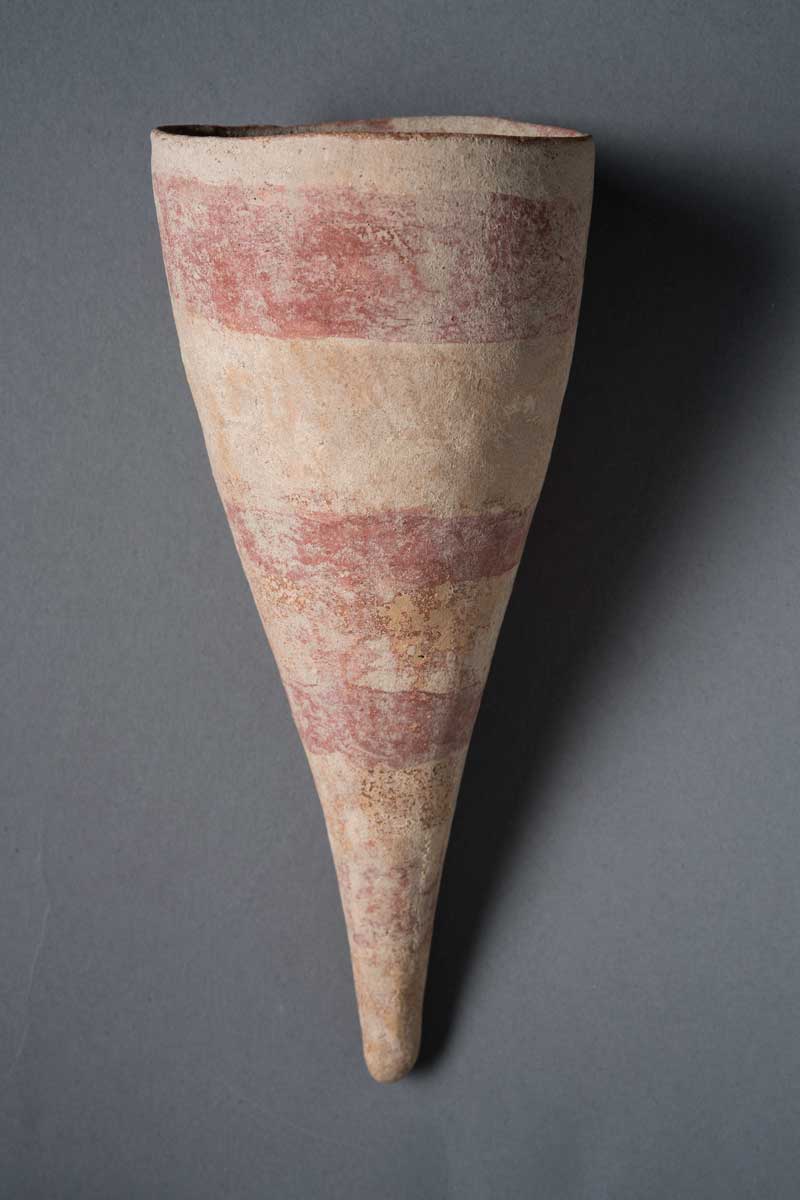Levantine Pottery
Ghassulian Cornet
By James Osborn

Material: Ceramic
Dimensions: Width 7.2cm, height 17.5cm
Culture/Date: Chalcolithic, ca. 4500-3300 BCE
Collection: The Frank and Joan Mount Collection
This vessel is called a cornet, and dates to the Chalcolithic period (or ‘Copper Age’), ca. 4500-3300 BCE. Because of its easily identifiable shape, the cornet is one of the most distinctive members of a ceramic assemblage known as the Ghassulian Culture, after the site in Jordan where it was first identified, Teleilat Ghassul. Chalcolithic ceramic statuary occasionally incorporates these vessels, as seen in a famous statue from the site of Gilat in the Negev Desert depicting a ram with three painted cornets emerging from its back. Because of their pointed bases, these drinking vessels would have had to be held until their contents were finished or discarded, and were likely stored stacked upside down. A recent residue analysis of these types of vessels has concluded that they were used to contain beeswax, possibly for illumination as a beeswax candle (see Namdar et al., Journal of Archaeological Science 36 (2009): 629-636).